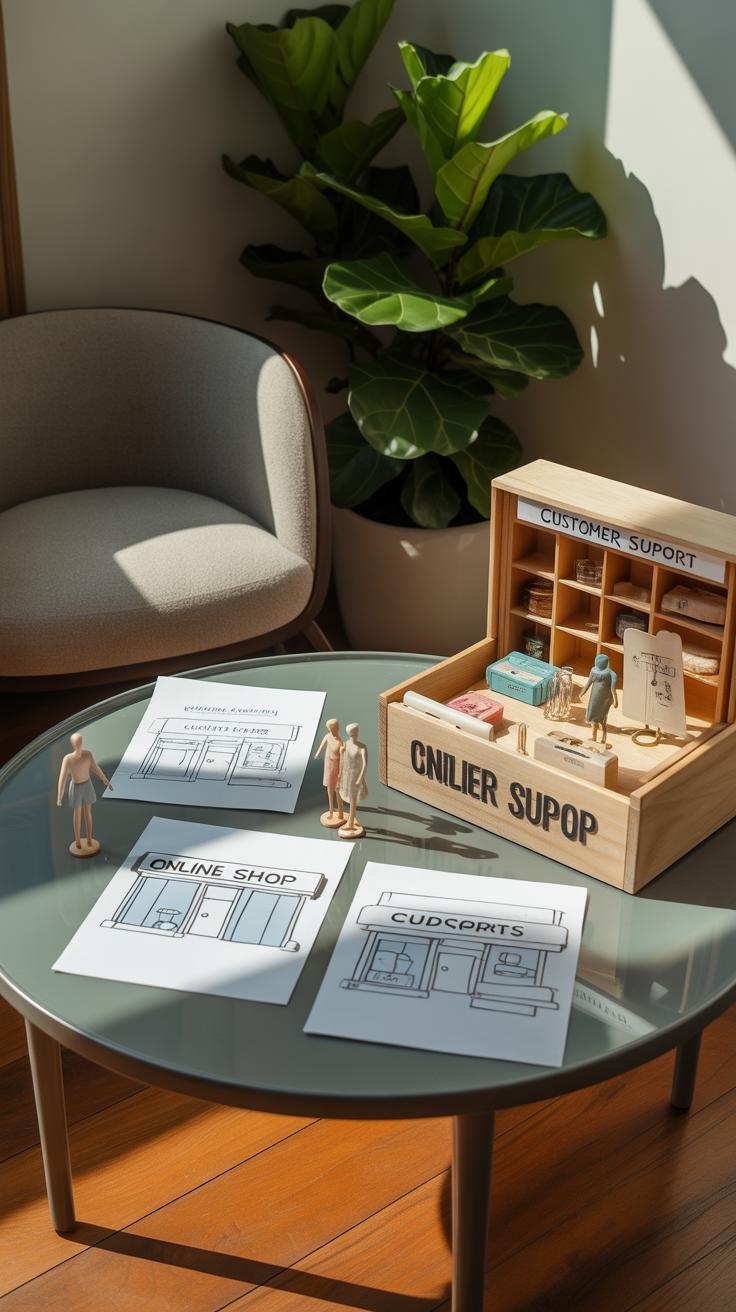Introduction
Starting a business can be a great way to take control of your future. This article explores business ideas that beginners can start today and succeed with. Understanding what it takes to build a business is key, and this guide will help you find ideas that are simple, practical, and profitable.
Starting small and learning as you go is often the best approach. We will discuss how to pick a good business idea, plan your business, and market it effectively, helping you take the first step toward success.
Understanding Business Ideas
What is a Business Idea
A business idea is simply the foundation of a business. It’s the basic concept or plan around which everything else is built. Think of it as the initial spark that guides what you’re going to offer and who you want to reach. Without an idea, you don’t have much to start with, no direction to follow. It doesn’t have to be complicated or groundbreaking. Many successful ventures began with something straightforward—solving a simple problem, offering a product or service people need.
In fact, starting small can often be better, especially if you’re new to business. You get to test, adjust, and learn without overwhelming yourself or your resources.
Qualities of Good Ideas
When thinking about a business idea, you want to ask yourself what makes it “good”—especially for beginners just diving in. A few qualities usually stand out:
- Simplicity: You understand it, and so do your potential customers. When ideas get too complex, it’s easy to get lost or confused. You want something clear and focused.
- Profitability: There needs to be a way to make money. Sometimes, beginners overlook this, focusing only on passion or interest. But no matter how much you like something, it has to pay off eventually.
- Solves a real problem: People don’t buy products or services just because they exist; they want solutions. If your idea addresses a genuine need or frustration, it’s more likely to get attention.
- Uniqueness: You don’t have to reinvent the wheel, but having a twist or offering something slightly different can help you stand out in a crowded market. This can be tricky, though—sometimes an idea too unique might confuse customers.
So, when you come up with your idea, try to examine it through these lenses. Does it make sense? Can someone else see its value? Is it practical, at least to begin with? These are vital questions before diving deeper.
Finding Your Niche
Match Interests and Skills
Starting a business that fits your interests and skills can make a big difference. Think about what you enjoy doing or what you’re good at. When your business connects to those things, work feels less like a chore. You’re more likely to stick with it when challenges come up—because, well, you care about the subject.
For example, if you like baking and have a knack for it, maybe a small bakery or custom cake service fits you better than something completely unrelated. Skills also matter here. If you don’t know much about marketing or customer service, you might struggle with certain ideas, even if the product excites you.
Still, interests can change, and skills develop over time. So don’t worry if you don’t feel ready in every aspect. The key is to pick something close enough to your abilities and interests that you stay motivated but remain open to learning new things.
Research Market Needs
Picking a niche also means finding problems or gaps you can realistically solve. Look around and ask: What do people need that’s missing? Sometimes it’s obvious—like a neighborhood with no good coffee shop—or more subtle, like a service that could save people time or money.
Try simple ways to spot these needs. Talk to potential customers, scan online forums, or watch social media chatter. You might notice a frustration others share or a product repeatedly requested but not readily available.
It’s tempting to think you must invent something totally new. But often, improving or combining what’s already out there makes for a better start. Focus on finding a place where your interests and skills meet a real, unmet demand. That’s where your niche begins to take shape.
Planning Your Business
Before jumping into what you’ll sell or who you’ll sell to, take a moment to plan. It doesn’t need to be complicated—just a few clear steps to get your thoughts in order. Setting goals that are simple and realistic helps you focus. Think about what you want to achieve in the first few months or year. For instance, maybe it’s to make your first 50 sales or reach a small but steady client base. If your goals are too vague or big from the start, it’s easy to lose track or get overwhelmed.
Once you have goals, try writing a straightforward plan. Include the basics: what your product or service is, who you imagine as your customers, roughly how much it will cost to start and run, and where your earnings will come from. This doesn’t have to be a full report—just a page or two that keeps you grounded. Knowing these details early on can reveal if your idea really works or if you need to tweak something. It’s surprising how often simply writing things down makes ideas clearer.
You might find yourself adjusting goals or the plan as you go—and that’s okay. Does your goal match what the plan shows is possible? Are you clear on who will pay you? Ask yourself these questions before moving forward; they will save time down the road.
Choosing Your Business Model
A business model is basically how your business creates and captures value. It’s the blueprint that explains what you’re offering, who will buy it, and how you’ll make money from it. Without this clear picture, it’s easy to lose direction or end up chasing something that doesn’t quite work. I’ve seen many beginners jump straight into selling without thinking about this—sometimes with mixed results.
For beginners, sticking to simple business models often works best. Here are a few to consider:
- Selling Products: Whether physical items or handmade goods, this model is straightforward. You buy or make something, then sell it. Think of someone starting a small online shop or a local crafts booth.
- Offering Services: This doesn’t require inventory. You use your skills to help others. It could be anything from tutoring, consulting, to home repairs. Service businesses often start with low costs, which is a plus.
- Digital Goods: This includes ebooks, courses, or downloadable software. It might sound complicated, but creating something once and selling it repeatedly can be quite appealing—and less physical hassle.
Picking the right model depends on what you care about and what resources you have. If you’re not sure, ask yourself: Do you prefer hands-on work or something more flexible? How much money or time can you invest upfront? None of these choices are perfect, but working through these questions can clarify what fits your idea best. Sometimes you have to test more than one path before settling down.
Funding Your Startup
Starting a business doesn’t always mean chasing big investments right away. In fact, beginning with limited funds can be a smart move. Using personal savings or taking out a small loan keeps things manageable and lets you learn the ropes without drowning in debt. It’s surprising how much you can do when you focus on essentials and keep overheads low.
When you start small, you reduce risks—and that can ease your mind. You get to test your idea, see what works, and adjust without pressure from outside investors. Sometimes, I wonder if more beginners hesitate because they think they need lots of money to start. Honestly, that’s rarely true.
Looking beyond your own wallet, there are other practical ways to get support. Small grants from local organizations or government programs might be available, and they don’t require repayment. Asking family or friends for help is also common, but tread carefully—mixing money and relationships isn’t always easy.
Crowdfunding can be an option too, if you’re willing to share your vision publicly. Platforms like Kickstarter or Indiegogo allow you to raise funds from strangers who believe in your idea, but it takes effort to get their trust—and some luck. What matters is finding what fits your situation best.
- Start with low-cost ideas to minimize financial pressure
- Use personal savings or consider microloans for early expenses
- Look into small business grants offered by local groups or nonprofits
- Ask family or friends carefully, keeping clear agreements
- Try crowdfunding to connect with a wider community, if you’re comfortable
Funding a startup is about making choices that fit your story. There’s no single path, and sometimes you might try one method, only to switch tracks soon after. That’s part of the process—it’s okay to be flexible and figure things out as you go.
Marketing Basics
Finding your customers is more than just guessing who might want your product or service. Start by thinking about what problem your business solves or what need it fills.
Ask yourself questions like: Who benefits most from this? Where do these people spend their time? What do they care about? Sometimes, you might think your ideal customer is one type, only to realize after some feedback they are quite different. That’s normal.
Once you have a rough idea, look for ways to reach them without spending a fortune. Social media platforms like Facebook and Instagram let you connect directly with local groups or communities. You can join discussions, share useful info, or even post about your offer.
Local online ads, like community bulletin boards or neighborhood apps, often let small businesses promote themselves at low cost. These places tend to attract people nearby, which means you’re more likely to find those who can actually become customers.
Try simple things first—maybe post a short video about your product or share a customer story. See what works and what doesn’t; it’s a process. Marketing doesn’t have to feel overwhelming. With a bit of patience, you can slowly build interest and grow your customer base step by step.
Building Customer Relations
Good relationships with customers can make or break your new business. When you’re starting out, every single client matters much more than you might think. Customers who feel appreciated tend to stick around. They come back, tell others, and sometimes forgive small mistakes. Building this trust isn’t always straightforward. It takes patience and genuine effort.
So, what does maintaining strong customer relations look like? For beginners, it might mean simple things like remembering names, responding quickly, or just showing you care beyond the sale. These little touches add up over time, shaping how people see your brand. The result? A community that supports you, even as you’re still finding your footing.
Provide Great Service
Great customer service is more than just being polite—it’s about being helpful in ways that actually solve problems. Friendly service can calm frustrated customers, encourage questions, and make people feel valued. You don’t need fancy scripts or hours of training; just a willingness to listen and respond honestly goes far.
I remember a time when a new baker I knew stayed late just to fix a messed-up order for a customer. That customer not only stayed loyal but brought new people in. It shows how simple kindness and responsiveness hold more weight than you might expect.
Ask for Feedback
Asking customers what they think might feel awkward at first. You may worry about criticism or feel unsure how to use the information. But feedback is one of the clearest ways to improve your business. When you listen carefully—whether it’s praise, complaints, or suggestions—you get direct clues about what works and what doesn’t.
Try asking for feedback regularly, but keep it casual and easy. A quick survey after a purchase or a follow-up message asking how the experience was can offer surprises. If you act on this feedback, share changes with your customers too. That shows you’re paying attention, which builds even more trust.
Growing Your Business
Once your business gets going, the question shifts to how you grow it without losing control or burning out. One sensible approach is to expand gradually. Rushing into too many new products or markets might seem tempting but can backfire. Slow, steady growth lets you test ideas, learn from mistakes, and adjust as you go. For example, if you start selling one product well, adding a related item gives you a chance to see if your customers want it, without overwhelming your resources.
Marketing efforts also benefit from gradual expansion. Rather than throwing all your budget into every channel at once, try one approach first, maybe social media or local ads, then build from there. This way, you can measure what actually works, and drop what doesn’t—saving money and energy.
Another thing that makes a difference is keeping yourself open to learning. Markets change, customer tastes shift, and new tools show up regularly. Spending some time reading about trends or picking up new skills can boost your chances of success later on. It’s tempting to think you know enough already, but staying curious can reveal opportunities you hadn’t considered before. Have you ever found a simple trick or new idea that made you rethink how you run things? That sort of ongoing learning often comes from just staying engaged and open-minded.
Conclusions
Picking a simple and clear business idea is essential for beginners. Focus on ideas that solve problems and that you understand well. Planning carefully and knowing your market helps you turn your idea into a real business. Remember, small businesses can grow steadily when driven by passion and clear goals.
Starting a business means learning, adapting, and working hard. Take each step one at a time. Use the ideas and tips shared here to guide your path. Your business can succeed when you choose the right idea and execute it with care and effort.






















